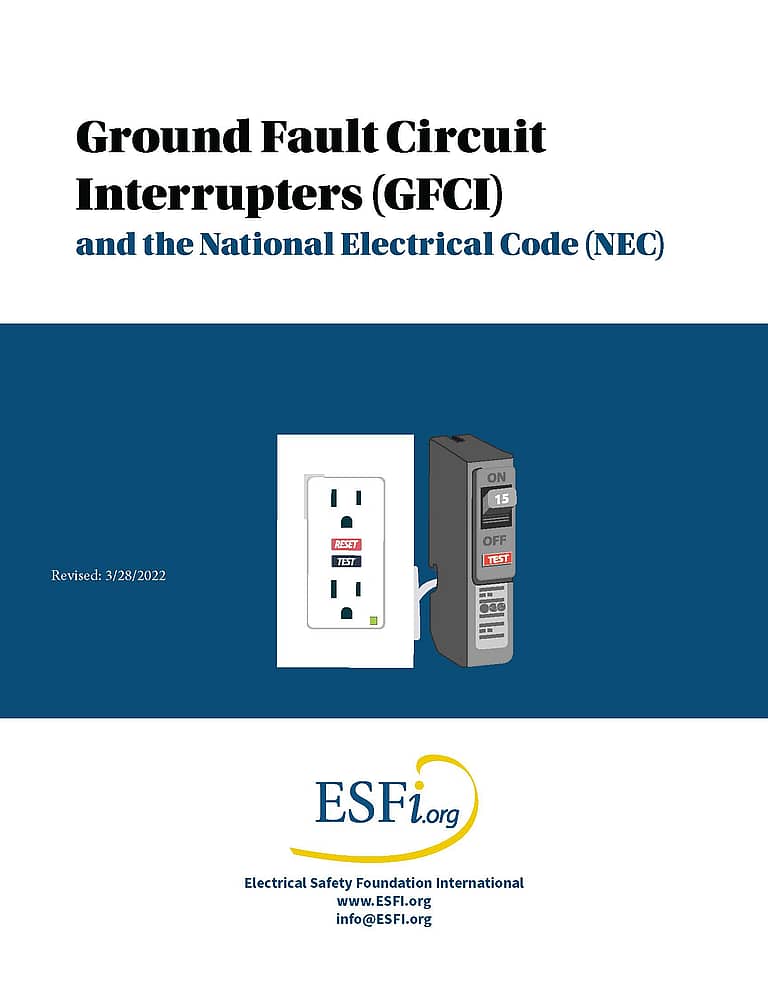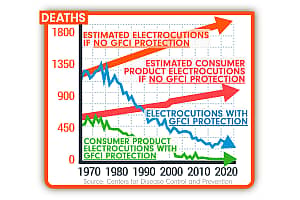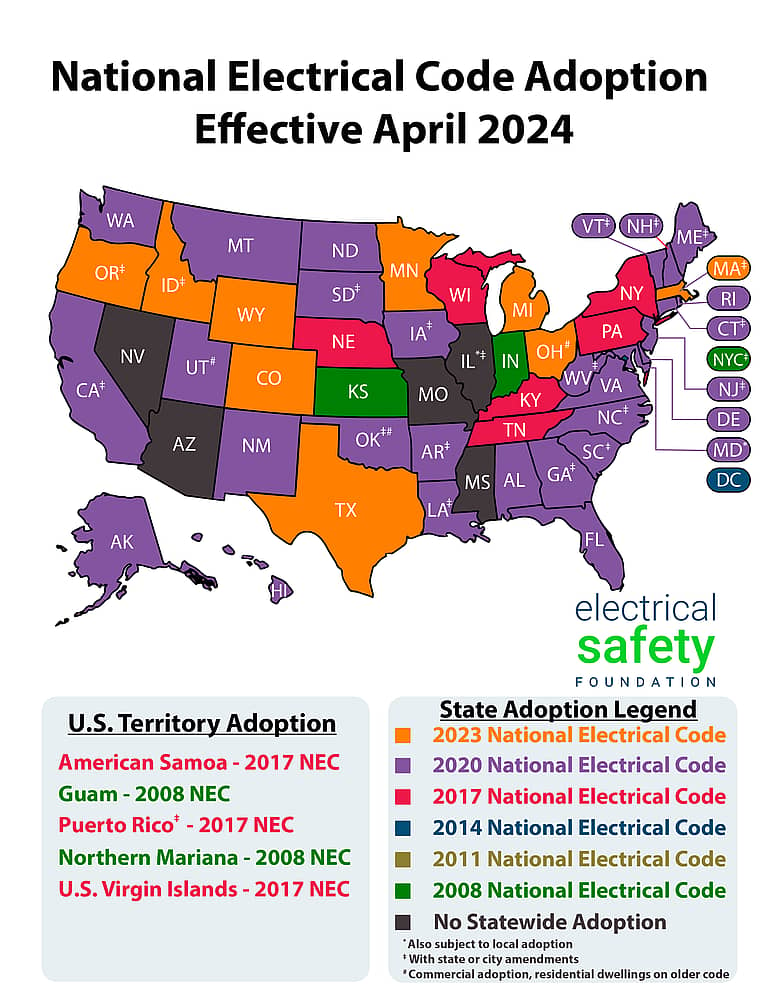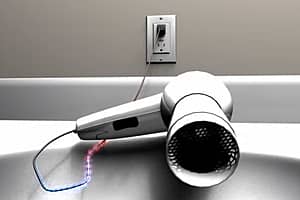The lifesaving capabilities of ground fault circuit interrupters (GFCIs) cannot be overstated. These devices have saved thousands of lives and significantly reduced the number of home electrocutions since they were first required in the bathrooms of homes by the National Electrical Code (NEC) in 1975. Since then, the number of GFCI requirements has grown as in home electricity use with the risk of contact with water has increased.
In the ten years between 1971 and 1980, there was an estimated average of 1,101 electrocutions in the United States, including 491 consumer product electrocutions every year. As GFCI requirements expanded, the number of electrocutions dropped significantly. Between 2011 and 2020, there was an estimated average of 246 electrocutions per year, including 41 consumer product electrocutions. This has led to an 80% drop in electrocutions since the introduction of GFCI protection in bathrooms and a 93% drop in consumer product electrocutions between 1975 and 2020. Since 1978, the median year the average American home was built, GFCI requirements have expanded to include six additional locations in homes.
Electricity is a necessary part of our lives that we tend to take for granted, but using it is vitally important. Thousands of people in the United States are critically injured and electrocuted as a result of electrical accidents in their own homes each year. As more aspects of our lives and homes use electricity than ever before, the safety devices required by the NEC have become increasingly important. Since the 1970s, GFCIs have saved thousands of lives and have helped significantly reduce home electrocutions. If GFCIs did not exist, or if the NEC was not adopted in full, consumer electrocutions would have continued to tragically increase.








